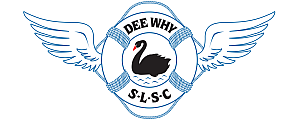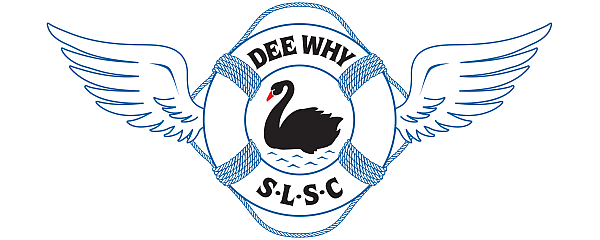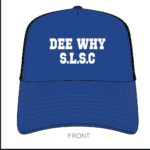Expand each section below to find a summary of the associated events.
IRB Events
IRB competition aims to:
- Improve the skills and technique of IRB drivers and
- Allow crews to demonstrate their techniques and abilities to perform
- Bring crews together to discuss and improve IRB techniques and
- Promote safety awareness techniques for the crew and patients in simulated rescue scenarios.
There are five events in IRB competition with each involving a drivers, crews and patients. The events include:
- IRB Rescue
- IRB Rescue – Tube Rescue
- IRB Team Rescue
- Mass Rescue
- IRB Relay
Lifesaving Events
Champion lifesaver
This event provides an individual the opportunity to demonstrate their physical and mental skills required to be a lifesaver. The skills include a lifesaving questionnaire, resuscitation, surf race, surf board race, beach sprint and a rescue tube race. A point score based on the results achieved determines the winner.
Patrol competition
The aim of the patrol competition is to demonstrate how surf lifesavers work as a team in performing some or all skills associated with surf rescue patrol work. Team members in the patrol competition must be from the same club. The patrol competition includes a number of physical skills, practical and theory tasks involving racing, rescue and/or first aid situations.
First aid competition
The first aid competition is a team event, and is conducted with a set simulated accident scenario and a time limit for each team. The time limit is advised prior to the commencement of competition. Judging is based on SLS First Aid standards.
Beach Events
Beach sprint
Competitors run on a straight sand course of approximately 70 – 90 metres from a start line to a finish line.
Beach relay
Teams of 4 competitors race on a straight sand course of approximately 70 – 90 metres with a baton, running one lap each. The final runner of a team over the finish line wins.
Beach flags
Competitors start lying on their stomach facing away from a baton(s) buried in the sand approximately 15 – 20 metres away. There is always less batons than On the starting gun, competitors rise, turn and race to secure a baton. The competitor(s) who fail to obtain a baton are eliminated. The process repeats until there is a single winner.
2 km Beach run
Competitors race on a sand course in four laps of 500 metres to total approximately 2km.
Board and Ski Events
Board and Ski Events
Single Surf Ski Race
From a floating start, competitors paddle their surf ski around three buoys and return to the finish line. The finish is judged when any part of the surf ski crosses the finish line with the competitor and their paddle all in contact.
Double Surf Ski Races
Two competitors paddle their double ski around three buoys and return to the finish The finish is judged when any part of the ski crosses the finish line with both team members and at least one paddle in contact with the ski.
Surf Board Races
From a standing start on the beach each competitor enters the water with their surf board, paddles around all buoys and returns to the The winner is judged by the first competitor to cross the finish line on their feet and in contact with their board.
Surf Board / Surf Ski Relay
Teams of three competitors compete in a relay format over a course similar to the respective individual After rounding the buoys and returning to the beach the first competitor runs around two turning flags to tag the second competitor. The second competitor then completes the course and tags the final competitor. The race finishes when the final competitor rounds all buoys, returns to the beach and runs to the finish line.
Swimming Events
Surf Race
The Surf Race involves swimmers starting on the beach and then running, wading and swimming about 170metres to sea to round as set of buoys and then return to the beach. The event concludes with a run finish to the flags placed on the beach.
Surf Teams
The Surf Teams Race comprises four swimmers in each team who all complete the Surf Race course. One Point is allocated for the first competitor across the finish line, two for second and so on. The team recording the lowest points wins.
Belt Race
The Surf Belt race involves the use of the surf reel, line and belt and is one of the most prestigious and traditional races in surf lifesaving competition. The event begins on the beach with the swimmer placing the belt around their waist and towing a surf line out to their allocated buoy and signalling their finish. The Belt swimmer is assisted by three linesmen and a reel handler.
Rescue Tube Rescue Race
The rescue tube rescue event features four team members: a patient, a rescue tube swimmer and two rescuer assistants. The event commences with the patient swimming to their allocated buoy and signalling back to the beach. The rescue tube swimmer then swims to rescue the patient using swim fins and a towing a rescue tube. Upon arrival at the buoy the rescue tube swimmer harnesses the patient into the tubes and swims back to the As the rescue tube swimmer and patient approach the shore the two rescuers enter the water to assist in getting the patient across the finish line.
Rescue Tube Race
The rescue tube race is contested on the same course as the surf belt race. When the race commences the competitors must run up the beach to collect their rescue tube, turn and race to the water and swim to their allocated buoy to signal their finish of the race.
Surf Boat Events
Surf Boat races involve crews of five competitors, four of whom shall be “rowers” and a “sweep” (who controls the boat by use of a sweep oar).
Boat crews start at the water’s edge holding their boats ready. On the starting signal, crews row around their assigned turning buoy situated approx 400 metres off shore and return to the beach. The winner is the first crew to pass their boat between the finish flags on the beach.
Multi-Discipline Events
Ironman / Ironwoman
Ironman and Ironwoman events are conducted over a course consisting of three legs, including a swim, a surf ski and a surf The race concludes with a beach sprint to the finish line. The order of the legs may vary and is decided by draw prior to the event.
Taplin Relay
Teams compete together in a relay format to complete an Ironman course. The order of the legs may vary and is decided by draw prior to the event.
The Taplin Relay event may be conducted in three person (one swimmer, one surf board and one surf ski paddler), six person (two competitors for each water leg), or four person (one competitor per water leg plus a beach sprinter to complete the race)
Lifesaver Relay
Teams shall be comprised of nine competitors including one surf boat crew, one swimmer, one surf board paddler, one surf ski paddler and one beach Teams compete in a relay format over the Surf boat and Ironman courses. The surf boat leg will always be the first leg as will the beach sprint always concluding the race. The order of the other legs may be drawn by ballot.
Cameron Relay
Teams of four competitors comprising of a surf board paddler, surf swimmer and two runners compete in this The order of the water legs are drawn by ballot. The first competitor enters the water, rounds the buoys and returns to shore where they tag the first runner. The first runner rounds turning flags and tags the next competitor who round the buoys and tags the last runner. The last runner runs to the finish line.
Surf Board Rescue Race
This two-person event comprises of a surf swimmer and a surf board The race commences with the swimmer swimming to their allocated buoy and then signalling back to the beach for their board paddler to come out and collect them. Once the paddler reaches the swimmer, the two paddle their board back to beach and cross the finish line.
Rescue and Resuscitation Events
R&R competition can involves the use of the traditional reel, line and belt and provides the opportunity for SLSA members to demonstrate in a competitive manner some traditional rescue and resuscitation techniques used within SLSA. Teams are judged on a combination of drill technique, rescue and resuscitation performance.
March Past Events
March Past is one of Surf Life Saving’s original events and represents the traditional discipline of a surf lifesaver. Teams, often dressed in full length club swimming costumes, march in time to music around a set course carrying a surf reel, line and belt and following their standard (flag) bearer. Teams march in formation following commands and they are judged on factors such timing, arm and leg swing, space and dressing, body carriage and presentation.
Pool Rescue Events
200 Metre Obstacle Swim
This event consists of swimming freestyle a total of 200 metres passing under eight immersed obstacles.
100 Metre Obstacle relay
This event consists of swimming freestyle 100metres passing under four immersed obstacles.
50 Metre Manikin Carry
A competitor swims freestyle for 25 meters then dives to recover a submerged manikin and then carries it to the finish edge of the pool.
100 Metre Manikin Carry with Fins
A competitor swims 50 metres freestyle wearing swim fins to recover a submerged manikin located at the 50 metre The manikin is then carried back to the pool edge to finish.
100 Metre Rescue Medley
This event involves swimming 50metres in freestyle, turning and swimming underwater for 5 metres to a submerged manikin. After recovering the manikin it is carried to the finish edge of the pool.
100 Metre Manikin Tow
A competitor swims 50metres freestyle with fins towing a rescue tube. At the tuning edge of the pool the rescue tube is placed around a floating manikin and is towed back 50metres to the finish line.
200 Metre Super Lifesaver
This is the equivalent event to the Ironman/Ironman. A competitor swims 75 metres freestyle to recover a submerged manikin, and then continues carrying the manikin to the turning The manikin is then released, fins are put on and the competitor tows a rescue tube 50 metres. At the pool turning edge, the rescue tube is placed around a floating manikin which is towed to the finish end of the pool.
4×50 Metre Obstacle
This is a team event of four competitors each swimming 50metres freestyle each, passing under two immersed obstacles.
4×50 Metre Medley Relay
A team event involving four legs – 50 metre freestyle without fins, 50 metre freestyle with fins, 50 metre freestyle towing a rescue tube without fins and then 50 metre freestyle with fins towing a team member to the finish edge of the pool.
4×25 Metre Manikin Relay
A relay of four competitors each swimming 25 metres carrying a manikin.
Line Throw
A timed event where the competitor throws an unweighted line to a team member in the pool and then pulls him/her 12metres back to the poolside.
Simulated Emergency Response Competition
This event involves teams of four lifesavers reacting to a simulated emergency scenario within a two minute time limit. Teams are judged and receive points based on their performance in the scenario.






